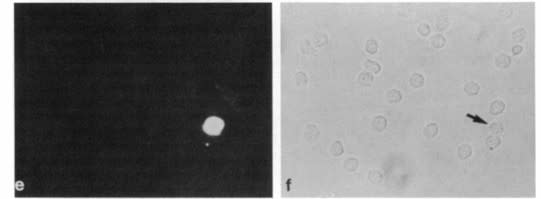Cat. #151132
Anti-Mast Cell [MCG35]
Cat. #: 151132
Sub-type: Primary antibody
Unit size: 100 ug
Availability: 3-4 weeks
Target: Mast cell marker
Class: Monoclonal
Application: IHC
Reactivity: Human
Host: Mouse
£300.00
This fee is applicable only for non-profit organisations. If you are a for-profit organisation or a researcher working on commercially-sponsored academic research, you will need to contact our licensing team for a commercial use license.
Contributor
Inventor: Peter Parker
Institute: Queen Mary University of London
Tool Details
*FOR RESEARCH USE ONLY (for other uses, please contact the licensing team)
- Name: Anti-Mast Cell [MCG35]
- Research fields: Tissue-specific biology
- Clone: MCG35
- Tool sub type: Primary antibody
- Class: Monoclonal
- Conjugation: Unconjugated
- Molecular weight: 80 kDa
- Strain: Balb/c
- Reactivity: Human
- Host: Mouse
- Application: IHC
- Description: MCG25 is useful for mast cell identification in immunological reactions and hypersensitivity diseases e.g. allergy and asthma. The antigen is found in granule components of mast cells and may also be found intracytoplasmically in human mature small enterocytes, liver parenchymal cells and kidney proximal tubule epithelial cells.
- Immunogen: Spleen cells and bone marrow cells (erythrocyte depleted) from a patient with systemic mastocytosis. The bone marrow preparation consisted of 50% typical mast cells.
- Isotype: IgG1 kappa
- Myeloma used: P3X63Ag8.653
- Recommended controls: The antigen is found in granule components of mast cells.
Target Details
- Target: Mast cell marker
- Molecular weight: 80 kDa
- Target background: MCG25 is useful for mast cell identification in immunological reactions and hypersensitivity diseases e.g. allergy and asthma. The antigen is found in granule components of mast cells and may also be found intracytoplasmically in human mature small enterocytes, liver parenchymal cells and kidney proximal tubule epithelial cells.
Applications
- Application: IHC
Handling
- Format: Liquid
- Concentration: 1 mg/ml
- Unit size: 100 ug
- Storage buffer: PBS with 0.02% azide
- Storage conditions: -15° C to -25° C
- Shipping conditions: Dry ice
References
- Rimmer et al. 1987. Clin Exp Immunol. 68(3):712-8. PMID: 3308221.
- Origin of human mast cells studied by dual immunofluorescence.
- Rimmer et al. 1984. J Clin Pathol. 37(11):1249-55. PMID: 6389604.
- Human mast cells detected by monoclonal antibodies.

![Anti-Mast Cell [MCG35]](https://cancertools.org/wp-content/uploads/ce49a21a-c849-454d-9eac-4a911bf584f1.jpg)


